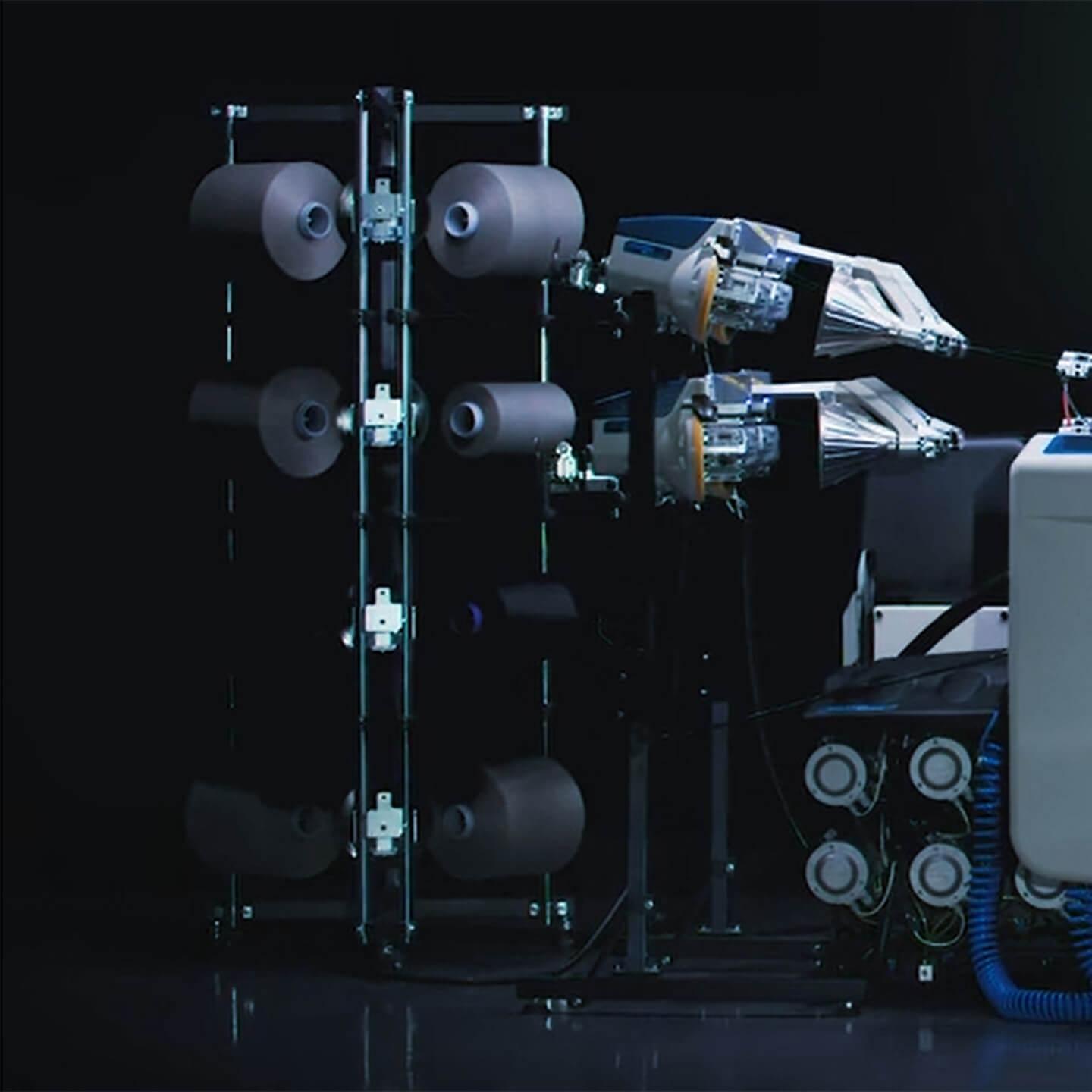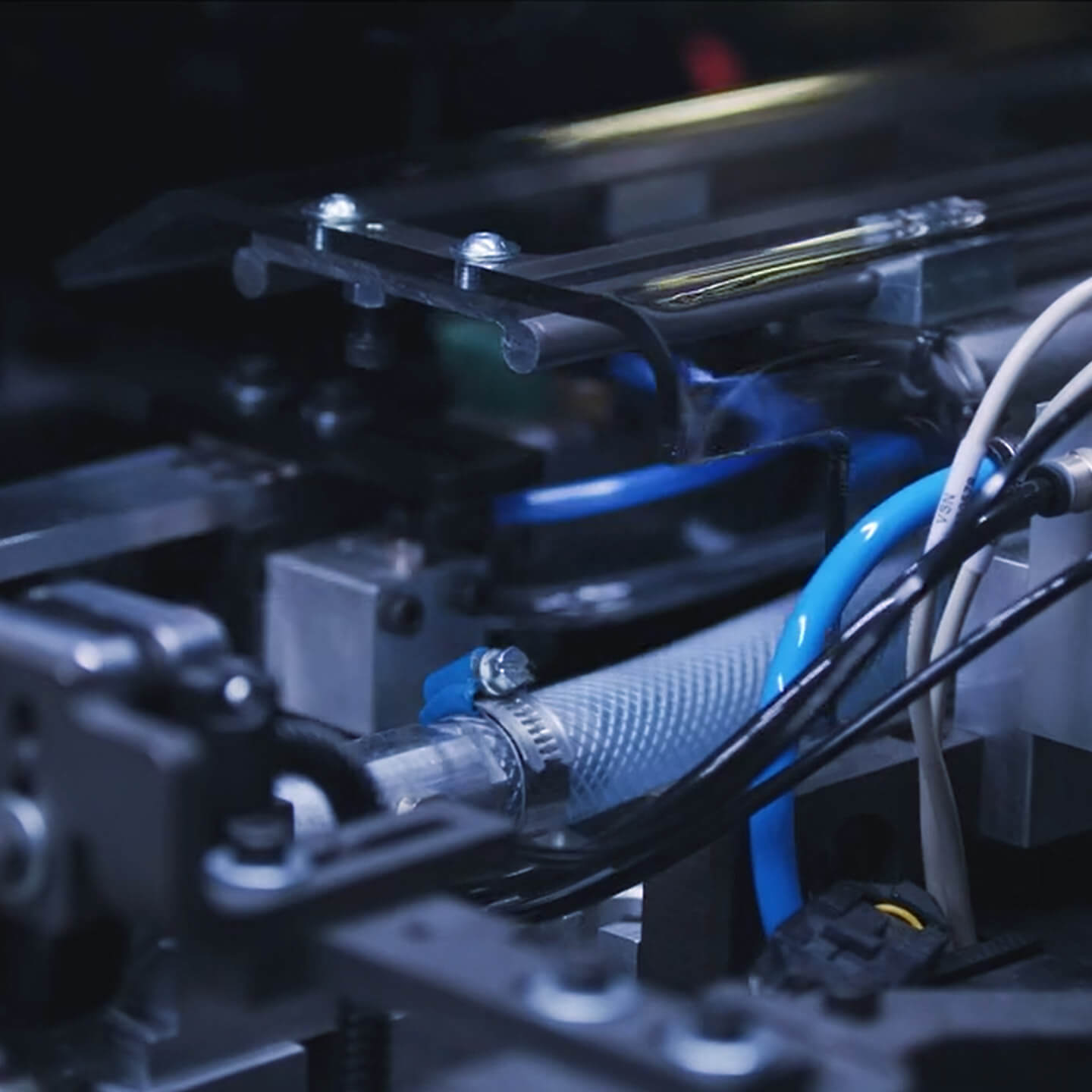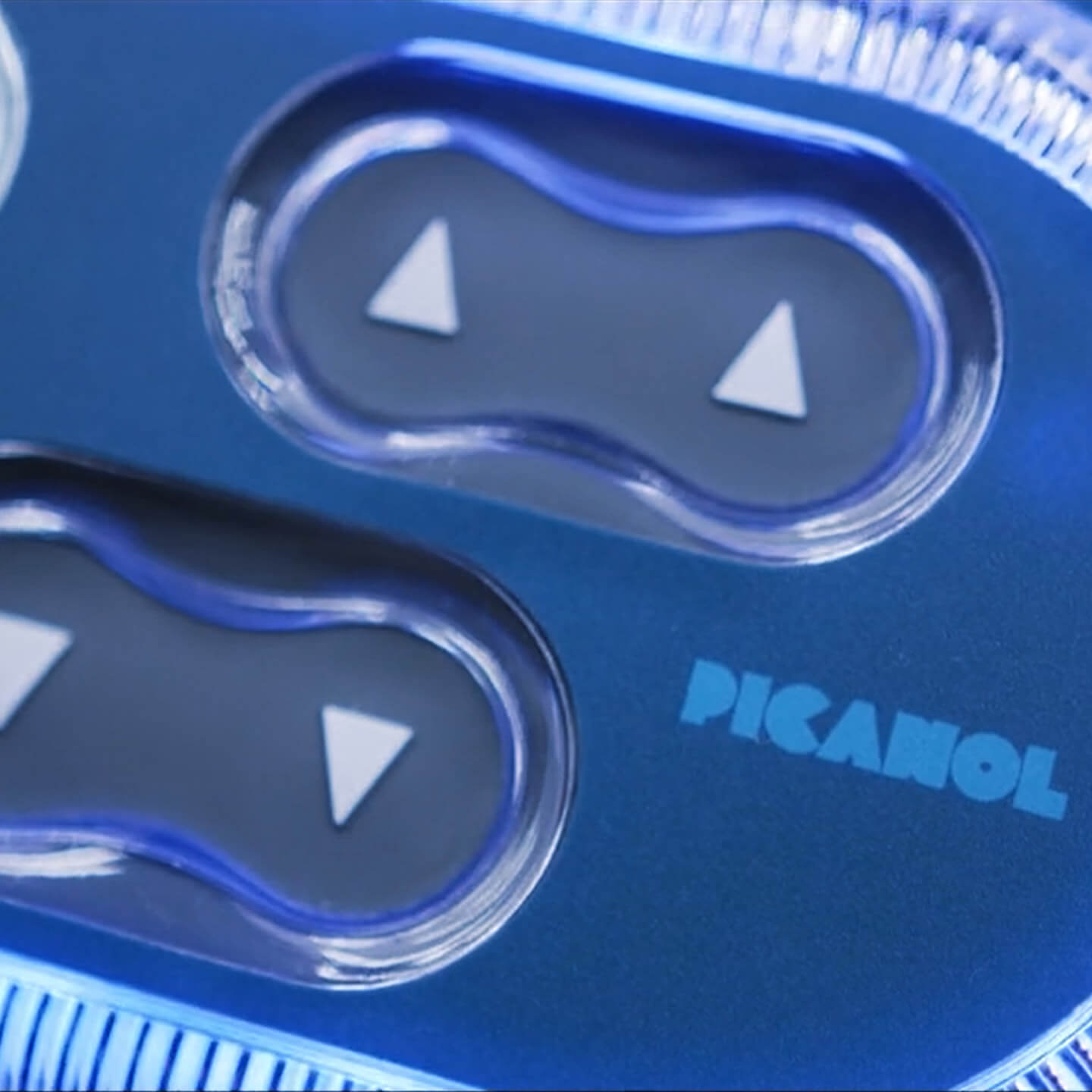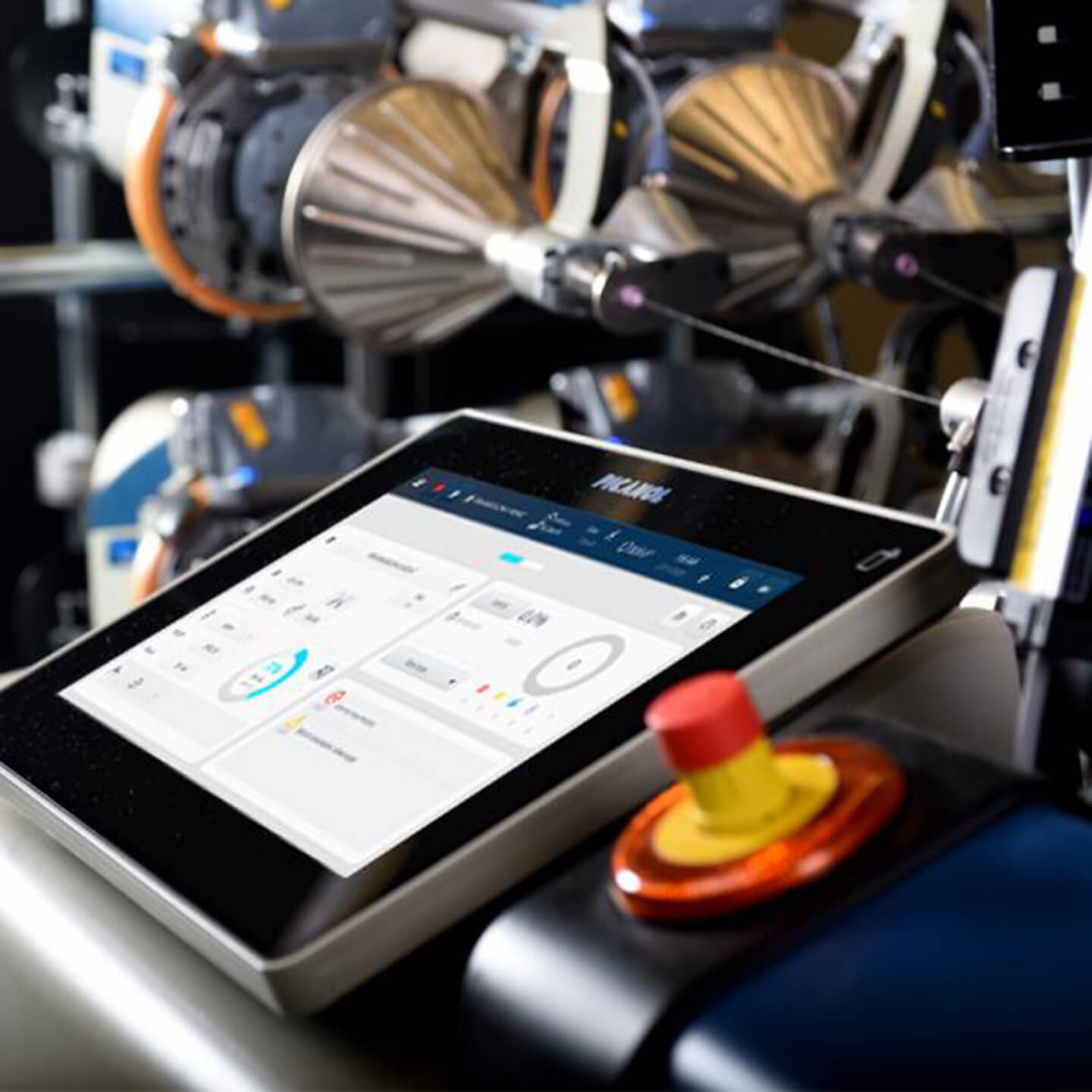The new benchmark in airjet weaving
A bit of industrial history in advance: The first mechanical loom programmed by punch card, an invention by Joseph-Marie Jacquard, serves as a model for early computing machines. Almost visionary: the hardware and software separated for the loom as early as 1805 became the determining factor in mechanical engineering two centuries later.
On its latest airjet machines, Picanol has introduced the fully digital shedding motion SmartShed. With this SmartShed, Picanol goes conceptually a big step further and separates mechanically coupled motion sequences into individual axes. These have to be synchronized quickly and precisely with each other. The Belgian technology leader uses a servo solution including motion control from Lenze for this purpose. For Picanol project engineer Emmanuel Delboo, the change from mechanical to electronic interconnection has the advantage that the machines can be changed over much more easily when other products need to be produced. Different weaving patterns can also be set more quickly.
Customized Lenze drives
For Lenze's developers, the SmartShed project was anything but an everyday job. The weaving machine brings with it virtually all the major challenges that naturally affect drive technology: Power density, energy efficiency, performance, thermal behavior, cooling concept, integration capability, time-to-market - to name just a few. "We want the advantages of single axes, especially in terms of set-up capability - but not at the expense of speed," notes Delboo. Likewise, the development project was based on the premise of keeping the costs for the technical equipment under control in order to be able to stand up to international competition. To put it bluntly: The goal was to improve the price performance ratio. "This could only be achieved by customizing our portfolio," Francis Denayer, Sales Manager BeLux and responsible for Picanol in Belgium, looks back.
Intelligent cooling concept
The motors in particular required a special design in cooling to enable a quick start-stop with high torques. Delboo: "Picanol relies on a central oil circuit for this, which lubricates all components and simultaneously takes care of cooling." The Belgians rejected initial thoughts of implementing a separate water circuit, as this would have required a second supply system.
Motion Control by Lenze
Another exciting aspect is the space-saving design of the drive electronics. Lenze supplies and controls the motors with servo inverters from the i700 series - largely in the form of double axes in view of the compactness required. Emmanuel Delboo: "The control cabinet is designed into the machine so that the OmniPlus-i airjet requires as little installation space as possible. Available space is always in limited in weaving mills." To ensure that the controllers don't run out of breath in view of the cycle rates of 1200 weft yarns per minute, the i700s are liquid-cooled by cold plate - also from the central oil supply. "Heat is dissipated without fans, which would quickly become clogged given the high fiber loads in the air from textile manufacturers," explains Francis Denayer. Depending on the size of the machine, eight to 16 servo axes are used. Motion control is primarily electronic cams calculated by the Lenze controller.
Longstanding partnership
During the many years of cooperation, Picanol and Lenze have successfully implemented numerous projects. "For our high-end machines, we also expect high-end solutions from our technology suppliers. Normally, we use Lenze's standard control and drive technology, and we are very satisfied with it," summarizes Delboo, referring to the SmartShed project: "This was particularly demanding from a technological point of view. The solution we needed was not available on the market. That's why the individual adaptations were necessary. With Lenze, this worked out excellently. We had a very good partnership here, with constructive technical meetings and ultimately a high-end solution. That was particularly important to Picanol."







